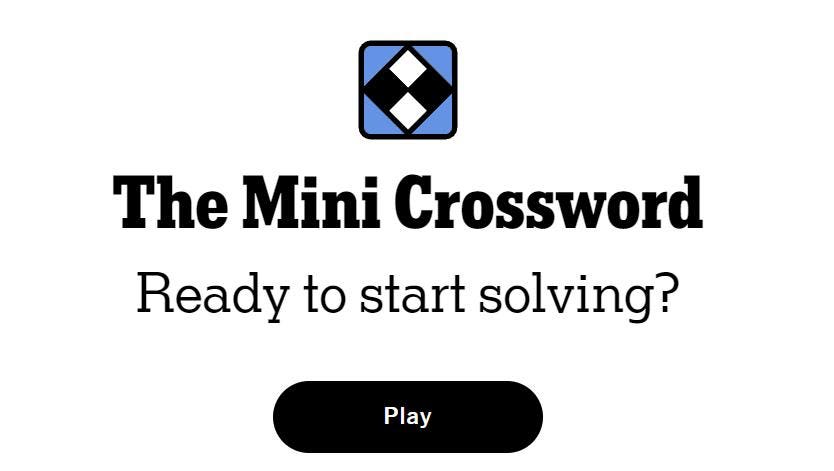A hand about to burst a money bubble with a pin. Metaphor for an economic or financial bubble crisis.
getty
The numbers tell a story of painful dissonance. In 2024, corporate AI investment reached $252.3 billion. Meanwhile, tech giants Amazon, Google, Meta and Microsoft are set to spend as much as $364 billion in their 2025 fiscal years on AI infrastructure, driven by investments in data centers and computing power that these human decision-makers believe will reshape the future. Precisely the same moment, UN Secretary-General António Guterres warned that the United Nations faces a “race to bankruptcy,” with the organization beginning 2025 with $700 million in arrears.
The contrast cuts deeper still. While AI startups raised $110 billion in 2024, up 62% from the previous year, the annual SDG financing gap has ballooned to $4.2 trillion, up from $2.5 trillion before the COVID-19 pandemic. The pandemic and climate shocks haven’t just stalled progress — they’ve pushed the goal posts further away, requiring ever more resources to meet basic human needs that were supposed to be within reach by 2030.
An Architecture Of Misalignment
These statistics represent people making choices — executives, investors, policymakers — choosing to direct capital toward artificial intelligence rather than toward ensuring every human being has access to food, clean water, shelter, healthcare and education. The scale of this misdirection becomes starkly visible when we zoom out: global financial wealth reached $305 trillion in 2024, while the entire world combined struggles to mobilize a fraction of that — $4.2 trillion annually — to achieve the Sustainable Development Goals.
Consider what this means tangibly. The SDG financing gap includes approximately $2.2 trillion annually needed for clean energy transition, $500 billion for water and sanitation, $400 billion for transportation and telecommunications infrastructure and $300 billion to eliminate extreme poverty and hunger. Every day children, women and men suffer from the consequences of funding shortfalls. At the same time we’re maintaining a system in place that allows the spending of comparable sums — hundreds of billions annually — building AI infrastructure whose primary environmental impact is negative.
The environmental footprint of AI development makes the irony still sharper. In 2023, data centers consumed 4.4% of U.S. electricity — a number projected to triple by 2028. U.S. data centers consumed 183 terawatt-hours of electricity in 2024, roughly equivalent to the annual electricity demand of Pakistan and this is projected to grow by 133% to 426 TWh by 2030. Meanwhile, hyperscale data centers are expected to consume between 16 billion and 33 billion gallons of water annually by 2028 for cooling systems — water that communities experiencing drought and climate-driven water scarcity desperately need.
Absurd Systemic Ripple Effects
At the individual (micro) level, these macro dynamics translate into lived suffering. With only six years remaining to achieve the SDGs, hard-won development gains are being reversed, particularly in the poorest countries,and if current trends continue, almost 600 million people will continue to live in extreme poverty in 2030 and beyond. Behind each number is a human life – 600 million individuals — mothers who have to choose between feeding their children and buying medicine, farmers watching crops fail due to climate change for which adaptation funding never arrives, children whose potential is squandered because schools lack teachers or basic infrastructure.
The community (meso) level reveals how local resilience is being systematically undermined. Communities that once weathered storms through mutual aid and local resources now find themselves competing for scraps of development funding while corporations pour billions into AI infrastructure. Schools close for lack of teachers and materials. Healthcare clinics run out of essential medicines. Water systems fail from deferred maintenance. Community centers that provided social cohesion shut their doors. Meanwhile, those same communities are courted by tech giants promising jobs and tax revenue if they host energy-hungry data centers — infrastructure that strains local power grids, depletes aquifers, and often delivers far fewer permanent jobs than promised. The social fabric frays as communities lose the capacity to care for their own, while corporate AI investments extract resources and provide little in return. From Mexico to Ireland villages in which gigantic datacenters have been set-up over the past months experience electricity blackouts and water shortages. They did not sign up for that ‘progress’.
At the country (macro) level, the financing divide deepens inequality between nations. Developing countries pay around twice as much on average in interest on their total sovereign debt stock as developed countries. In the least developed countries, debt service reached $40 billion annually between 2023 and 2025, up more than 50% from $26 billion in 2022, with stronger and more frequent climate-related disasters accounting for more than half of the debt upsurge in vulnerable countries. Countries are trapped: they need investment to adapt to climate change, but climate impacts drive them deeper into debt, while wealthy nations pour resources into AI that accelerates the very environmental degradation these nations cannot afford to address. It’s an absurd conundrum par excellence.
The global (meta) level reveals how organizations meant to serve humanity are being starved while tech companies gorge. The United Nations, once founded to preserve global peace and prosperity is forced to preserve a basic cash reserve. In 2024 it had 10% of its budget unspent because member states did not pay their dues; in 2025, this percentage of unspent funds could reach 20%. Schools, hospitals, local governments and community organizations in developing countries face impossible choices, rationing life-saving services while watching billions flow to Silicon Valley. (The double irony is that if the UN has unspent money at the end of the year it has to repay it to the member states, including those that have failed to pay their membership dues. As of October 2025, the two principal contributing states US and Russia have still not paid, neither for this year nor the past.)
The systems converge catastrophically. The International Energy Agency warns that climate pollution from power plants running data centers could more than double by 2035. A single AI query can use up to ten times more energy than a traditional Google search, and generative AI systems may use 33 times more energy to complete a task than traditional software. We’re accelerating toward planetary boundaries while the funding needed to pull back from the brink — for renewable energy, for climate adaptation, for biodiversity protection — goes unfunded. People and planet are the victims of a spiral that continues to accelerate.
The Precarious AI Bubble
The warning signs of a bubble flash bright. The recent rise of China’s DeepSeek sent a shockwave through the sector, with estimates suggesting the open-source tool cost a fraction of U.S.-based competitors to create, spurring a market selloff that pushed shares of AI chipmakers Nvidia and Broadcom down by a combined $800 billion in a single day. When a market can lose nearly a trillion dollars in value in 24 hours based on the emergence of a cheaper alternative, it suggests valuations disconnected from fundamental value.
Investors have expressed concerns that increasing spending on AI without seeing corresponding revenue growth will deprive companies of capital for buybacks and dividends while constraining non-AI business lines. The speculative frenzy has overtaken rational calculation. People — venture capitalists, corporate boards, individual investors — are making decisions driven more by fear of missing out than by evidence of sustainable returns. The quest for quick wins primes over long-term thinking. Money has taken the upper hand, while meaning and morality fade; relegated to the sidelines of oblivion.
When this bubble bursts – and history suggests it will, the ripple effects will cascade through economies. Workers will lose even more jobs. Pensions dependent on tech stock performance will shrink. Communities that welcomed data centers with tax incentives will be left with stranded assets and environmental damage. Meanwhile, the $4.2 trillion SDG funding gap will remain, having grown larger as climate impacts intensify and as years of potential progress are lost.
ProSocial AI: A Different Path Forward
The alternative path requires reimagining what AI is for. ProSocial AI — artificial intelligence that is tailored, trained, tested and targeted to bring out the best in and for people and planet—starts from a fundamentally different premise. The point of departure is no longer “What can AI do?” but “What should AI do to enhance human dignity and planetary health?”
This requires human agency amid AI. Every algorithm, every training dataset, every deployment decision involves human choices. The concentration of AI development in a handful of companies reflects choices about who gets to make those decisions. ProSocial AI demands democratizing those choices, ensuring that affected communities — particularly those in the Global South bearing the biggest burden of climate change and poverty — have a voice in determining AI’s development and deployment.
In a hybrid context this demands hybrid intelligence: recognizing that the most powerful solutions emerge from the complementarity of natural and artificial intelligence. Human judgment, ethical reasoning, contextual understanding and compassion remain irreplaceable. AI should augment these human capacities, not replace them. In healthcare, this means AI supporting diagnosis but human clinicians making final decisions with full patient context. In climate adaptation, it means AI modeling scenarios while local communities determine priorities based on their lived knowledge.
This path could lead toward a hybrid society where every being has a chance to develop their inherent potential in planetary dignity. Not a world where AI replaces workers, but one where AI handles repetitive tasks while humans focus on care, creativity and connection. Not a world where data centers drain water from struggling communities, but one where AI helps optimize water distribution to ensure every person has access to clean water. Not a world racing toward a few trillion-dollar individuals while billions struggle in poverty, but one where AI helps identify the most effective interventions to lift everyone to a threshold of human dignity.
A Practical Takeaway For Personal Advocacy
So what can you do? The transformation of capital flows from AI speculation to SDG fulfillment won’t happen through individual consumer choices alone. It requires systemic change. But systems change when enough people demand it. Here’s your entry point:
Make your voice count in proxy season. If you hold stock in tech companies — directly, through mutual funds, or through your retirement account — you have shareholder voting rights. During annual meetings (typically spring and summer), companies face resolutions on climate impact, human rights, and executive compensation. Vote for resolutions requiring AI environmental impact reporting. Vote for proposals tying executive pay to sustainability metrics. Vote against excessive executive compensation packages at companies posting record AI spending while global poverty increases.
Ask your institution to divest from extractive AI and invest in regenerative technology. If you work for or attend a university, if you have a pension fund, if you’re part of a religious institution with an endowment, advocate for shifting investments from speculative AI infrastructure to companies and funds explicitly aligned with SDG achievement.
Support political candidates who recognize human development as the moral crisis it is. Contact your elected representatives. When they debate budgets, remind them that billions of dollars are lost annually from tax avoidance and evasion, and fossil fuel subsidies are in the trillions.
Influence the narrative. When colleagues marvel at ChatGPT, mention that each conversation uses water equivalent to a plastic bottle. When news celebrates AI breakthroughs, ask what problems they solve versus what problems they exacerbate. Reframe the story from “inevitable AI future” to “choosing AI’s role in a human future.”
The choice isn’t between progress and stagnation. It’s between two visions of progress: one measured in trillion-dollar valuations and computational power, the other in billions of lives lived with dignity. The money exists. The sensible nerves are political will and personal agendas.
Our Escape From The Bubble
That shortage of will comes down to human beings; people who make investment decisions, cast votes – and accept the status quo.
The AI bubble, like all bubbles, will eventually pop. The tragedy is what we could have built instead — the schools, the hospitals, the clean water systems, the climate resilience, the human potential — if we had chosen differently. The opportunity is that we can still choose. Every day we delay, the SDG funding gap grows. Every day we wait, thousands of children’s potential is lost. The technology meant to augment human capacity is instead draining the resources needed to ensure every human can develop their capacities at all.
The question facing us is simple and urgent: are we ready to harness hybrid intelligence — combining the best that artificial and natural worlds have to offer — toward a world where every being can flourish?









